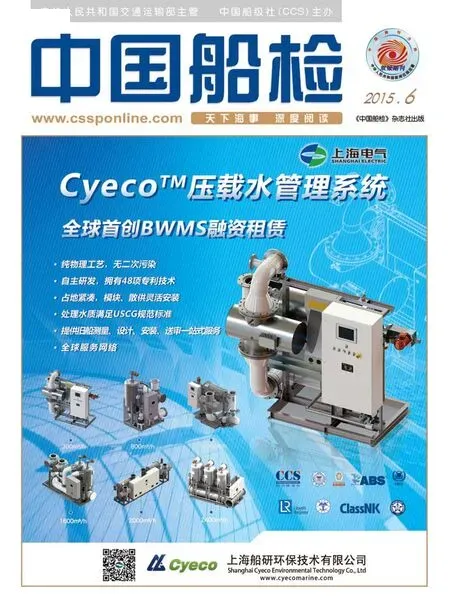Study on Yangtze Golden Waterway Ship Type Development
By Chen Qingren, Zhang Wei & Zhao Bingqian

At present, the development strategy of"One Belt and One Road" and the Yangtze River economic belt implemented by the Chinese government has put forward new and higher requirements for the logistics function of Yangtze River lines. The trend of large type Yangtze river ships is an important way to further tap the potential of the Yangtze golden waterway transportation. However,how large should the ships be to fit more better into market demand? And how to realize fast and sustainable development? These are major issues that we are confronted with.Currently, the volume of four major goods including dry bulk, containers, liquefied products, commercial vehicles accounts for about 76% of the total volume.Seen from the total volume, the total freight volume has gradually increased in recent 5 years. Though the rate of growth is slowing down year by year, the growth rate can still reach more than 7%. The volume of dry bulk is the largest, followed by liquefied products, containers and commercial vehicles. Seen from the status of the transportation capacity of the Yangtze river and the development demand, and according to the comparison between the transportation scale of 2013 as analyzed by the “Yangtze river shipping statistics” and the transportation volume of the same year, the conclusion could be roughly drawn that there is a serious surplus of Yangtze river dry bulk transportation capacity, the transportation capacity for liquefied products is nearly full and that for containers and commercial vehicles still has space for development.
According to investigation conducted of Chongqing shipping exchange and shipping companies on the upstream of Yangtze River, with daily increased demand of imported mechanical and electrical equipment for automobile industry in Sichuan and Chongqing area, the river-to-sea container transport demand in Chongqing area will continue to increase; with the explosive growth of agricultural miniature car in 2014, there will be an urgent demand of large ships for commercial vehicles.
Judging from the iron ore import and from the aspect of security of maple strategic material, Chinese government is speeding up the construction of silk road and expanding China-Latin trade to focus on the import of iron ore from Brazil. However, with the lengthened distance of transportation, the cost of logistics will increase greatly. China has initiated the construction plan of a 400,000 ton ore transfer base in Zhoushan to reduce the cost of sea transport. At the same time, in order to reduce the cost of river transportation and to be equivalent with Australia in terms of the cost of logistics supply line, dry bulk ships of Yangtze river need be large to enable direct navigation from river to sea.
The container transportation in Yangtze River shows that in order to improve the efficiency of transportation on main lines, major domestic shipping companies such as COSCO, China Shipping and others have adopted the ultra-low price for river section to compete to grab the main line interests. The water net of Yangtze River Delta is the same as that for COSCO and China shipping in the Yangtze River, the international shipping giant Maersk has controlled the container transportation in the water net area by using its huge resource and capital advantages. Low price has become the norm, and weak profit operation is irreversible. In order to seek survival in the crevice, inland shipping companies can only minimize costs, and large container ships are the most direct means.
At present, the demand of refined oil along the Yangtze River is mainly transported to refineries along Yangtze River through Sinopec luning crude oil pipeline,yonghuning crude oil pipeline, Yizheng-Changling crude oil pipeline, and supplied to the cities along the Yangtze River by the East-West refined oil pipeline. Since there will be no economy until the transportation volume can reach 10m tons for pipeline transportation, the transportation of crude oil and product oil along Yangtze river will be conducted in containers, the fluctuation range is relative to the pipeline capacity.
Judging from the logistics pattern of commercial vehicles in China, the industrial layout of FAW,SAIC, GAC in coastal area, and DFAC and Changan manufacturer in the hinterland of the Yangtze River produced the river and sea logistics demand. Limited by the height of bridges along Yangtze River and terminal handling capacity, the Yangtze river ro-ro ships for commercial vehicles are the main demand, whilst the river-to-sea ro-ro ships for commercial vehicles has no competition advantage.

